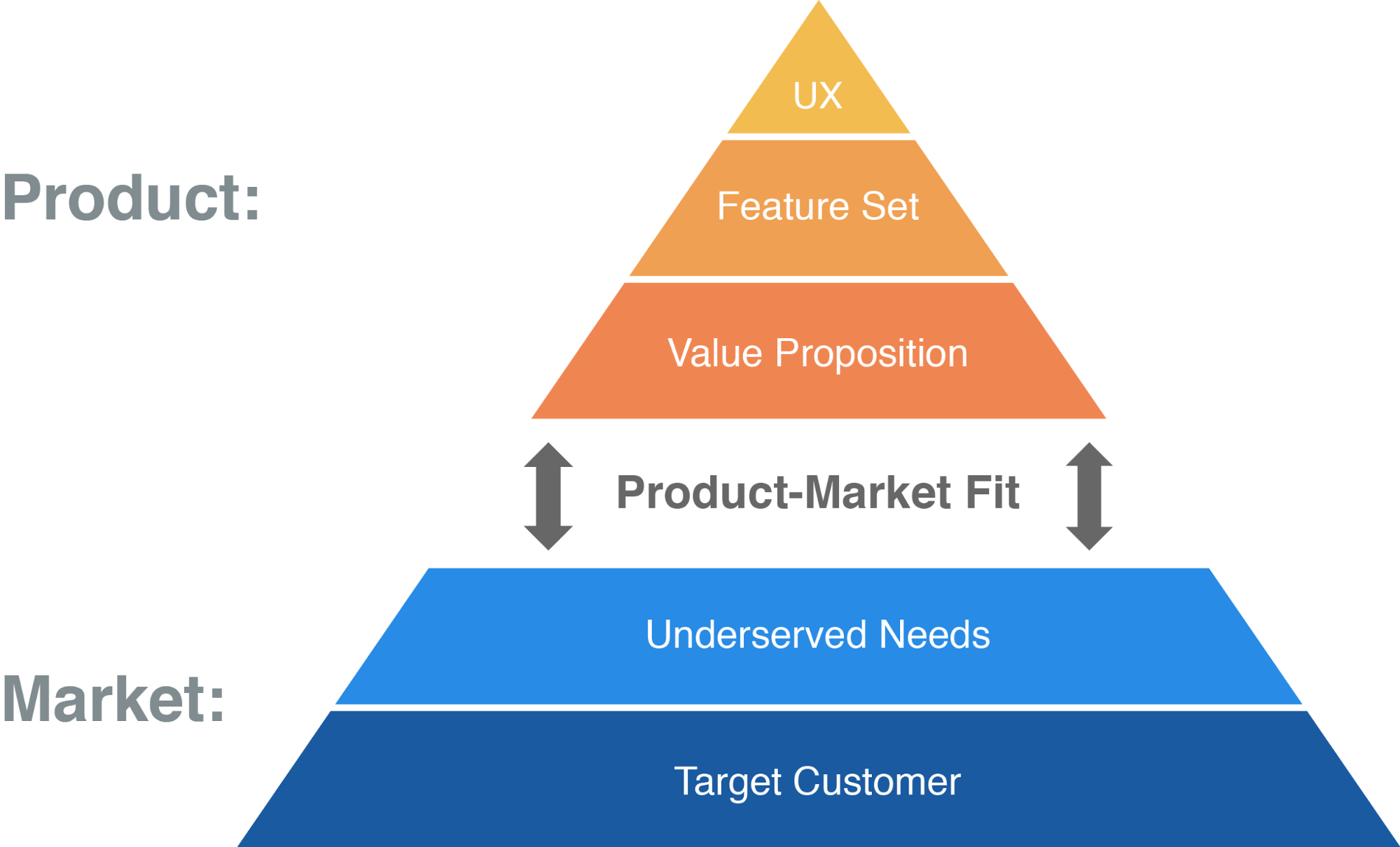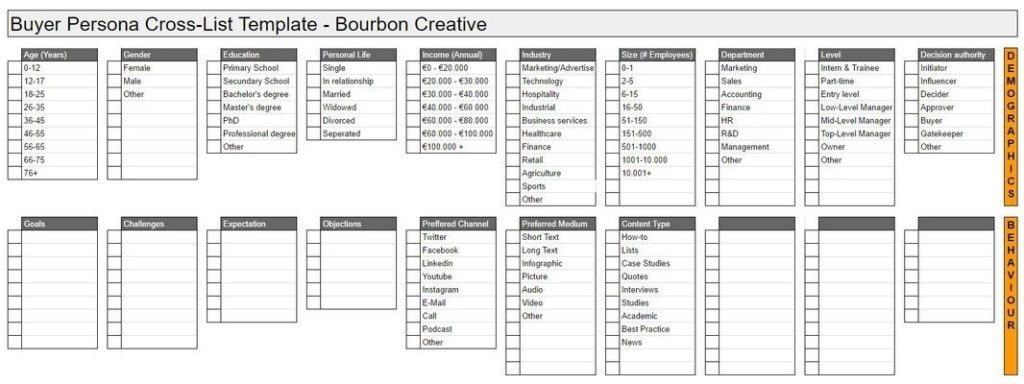In comparison to fully-grown, long-established companies, startups today face many unique challenges. For starters, as you figure out your product market, you might not have a clear customer profile in mind. That means the whole process of locating your target audience is a lot more complicated, since you can’t take advantage of existing data and trends. For startups, conducting audience research that’s in line with a marketing strategy can be tricky, but it’s certainly not impossible.
Right off the bat – if you have data you can build on, use it. Ideally, startups need to have a clear idea of who they are selling their product or service to, so that all information gathered is relevant and carefully directed. However, if that isn’t available to you, you’ll need to start from scratch. Luckily, we are here to show you how to get started:
Conducting Audience Research For Startups
1. Understand your product
Before you embark on a time-consuming research process, take a step back and make sure you fully understand the product or service you are selling. Of course, if you’re the founder or co-founder of your business, you’ll have a full grasp understanding. But if you’ve been brought in to manage digital marketing for a startup or SMB, this step is essential.
The process is simple: communicate with your tech team to understand in-depth the features and functionality of your product. Talk to your sales team to discover the strongest and most relevant business arguments for utilizing your product. Having a discussion with the founder of your product will also help you to get onboard with their vision for the company.
If you already have clients, gaining the full vision of your product will be even more straightforward. Derive information from your CRM system by determining the main talking points within client interactions. You might also consider carrying out surveys and feedback sessions with existing customers, if you’re fortunate enough to have a representative number already. But even if you don’t have a large customer base yet, you can still benefit from a survey approach by interviewing potential customers and experts in the field, in order to find out what the main drivers for, and objections against, purchasing your product might be.
Once you feel you’ve got a good idea of the specific product you are working with, you’re ready to move on to the next stage.

Product Market Fit. Source: Lean Startup Company
2. Know your industry
After getting input from your tech team, sales reps and founders, you’ll have a good insight into what exactly you’re selling. Now, it’s time to take a look at the playing field. As you gather details about your industry, key questions to ask are:
- What are the main challenges and obstacles in the industry?
- Who are your main competitors? Why are they so successful?
- Who are possible indirect competitors that offer substitutes of your product that consumers could choose instead?
By harnessing the power of search engines, you can find multiple useful reports and data that will quickly provide you with a more comprehensive picture of your target industry. In our experience, a crucial task is to identify the key players and best-performing companies within the industry. Find out who the leading competitors are according to their sales revenue or market share, and discover which firms are dominating the search engine ranks when googling for variations of terms around your product offering. Of course, that doesn’t mean that if your B2B competitor has one million followers on Twitter aged 13-19, you should necessarily target the exact same audience too! Keep in mind the difference between clicks, views, likes and actual sales.
Unfortunately, you’ll never discover the companies with the highest ROI from their content strategy. But typically, by looking at social metrics, sales volume and conducting “due diligence” by checking out who their followers are and how many of them are relevant, you can get a good idea which competitors actually have the largest audience of appropriate buyer personas. Once you pinpoint a dozen competitors, you can boost your research process enormously by studying and learning from their successes and mistakes!
3. Analyse competitors
This step is essential for audience research within startups. It’s also a shortcut. This is because compared to established firms who have experience in their industry, young companies may not have a considerable customer base or pipeline yet, from which to derive important conclusions and profiles. To overcome this disadvantage, it’s helpful to maximise the insights you can get from your competitors in identifying your potential customers and their profiles. Plus, why would you do all the hard work and research yourself, when you can gain valuable insights from your competitors’ efforts first?
All you need to do here is look closely at your competitors to identify their approach to their content strategy: What channels are they using? How many followers do they have on each of those? Who are their followers and supporters on social media and other platforms? What content do they share? What content generates the most engagements and what doesn’t?
You can get most of this information by simpling reading their articles on platforms such as Medium, Quora or Linkedin, using digital marketing tools to analyse their social media accounts, content and follower base, and by studying their websites. If you’re B2B startup, checking the corporate web for success stories and client references is a great to way to figure out who the best buyer persona might be for your business. All these steps will help you locate your specific target audience. On top of that, by discovering trending topics and common questions of competitors’ followers you’ll also gain valuable insights into your target customers’ challenges, obstacles and interests.
Based on our best practices for recording your findings, we suggest creating a simple Excel or Google Sheets spreadsheet where you can input your results for each competitor and category. Create different sheets for competitor demographics, competitor channels and topics. This visual approach will make it much simpler to understand your findings and identify patterns. Below you can find an example from one of our clients (numbers & names have been adapted to keep information confidential).

Competitor analysis
4. Create a Buyer Persona
With all the audience research data you’ve now gathered about your product, industry and competitors, you’re now ready to start forming your buyer persona. This step can seem daunting at first, since you’ll need to make some informed assumptions and overall conclusions, based on sound research. What’s more, in most cases, you’ll have more than one buyer persona, meaning even more work to do!
Remember: there’s no way of producing a 100% accurate marketing persona. In fact, the very definition of a buyer persona is a fictional and generalized representation of what your perfect customer might look like. The reason marketers create customer profiles is not to find ideal customers based on demographics. Rather, it’s to create an overall image of the people who might be interested in your product. So you can then find out what type of person they are, what they are worried about, what their goals are, what they read, how they get information etc. Efficiency here is key: you’ll develop a more precise and informed buyer persona over time as you grow in experience and feedback, so don’t get too caught up in the minute details of your buyer persona at this first stage,
We think the best way to collect your buyer persona information into a precise customer profile, is to use a cross-list. We’ve created our own checklist template and we’re happy to share it with you for free (click here). From our experience, we’ve found that a buyer persona profile should include a mix of information about demographics and behaviours. Start with the demographic categories and tick boxes that, based on your research, apply.
Once you’ve nailed the demographics of your buyer persona, especially what their typical job position might be, you can use this information to dive into behaviour factors. For this, you can use Linkedin to study different profiles and grasp who the decision makers are. Identify their goals, challenges and expectations, and in particular, and what objections they might have to using your product. Work out which social media channels they might be using, and check out any posts or articles they share via these channels. These will give you even more insight into personal characteristics and their daily needs in business. After looking at a dozen profiles, you’ll start to see behaviour patterns. Add these to your spreadsheet alongside the demographics By now, your buyer persona should be looking significantly more comprehensive and detailed.
5. Put it to the test
Once you’ve pinned down your buyer persona, the process doesn’t end there. In the long run, you’ll need to continue to measure your content’s success: is it performing well? Are you getting more leads from your digital traffic? What posts perform better, or worse? You’ll start to notice trends and patterns that might inspire you to adjust or update your existing profiles. Don’t be afraid to make these changes: this is a continuous learning process which requires you to be agile.
Plus, new innovative solutions appear everyday, and you’ll need a buyer persona that’s up to date with recent developments and technologies. If you want to be even more proactive and precise with your marketing persona analysis, try leveraging surveys and interactions with your followers to identify what they want to hear more about. This will allow you to make informed decisions about the behaviours and needs of your buyer persona as they shift and grow with the times.
Conclusion
And there you have it! Even if you’re a young startup without an extensive customer base, it’s simple to carry out effective and targeted initial audience research. By gaining a full understanding of your product, the industry you’re launching it in and the competing businesses in your field you can create a buyer persona that will help you focus your marketing approach. This will allow you to develop a tailor-made, flexible and effective marketing strategy and editorial calendar that you can leverage to help your business reach its full potential.



Comment (1)
Comments are closed.